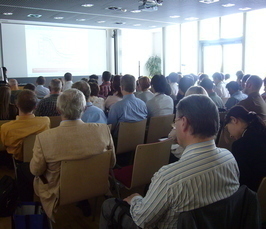MPI Colloquia Series: Prof. Oliver Trapp, Early Pathways to Life: Mechanisms to DNA, Molecular Evolution and Homochirality
MPI Colloquia Series: Prof. Oliver Trapp, Early Pathways to Life: Mechanisms to DNA, Molecular Evolution and Homochirality
- Date: Jul 25, 2019
- Time: 04:00 PM - 05:00 PM (Local Time Germany)
- Speaker: Prof. Oliver Trapp
- Department Chemie, Ludwig-Maximilians-Universität München
- Location: Max Planck Institute Magdeburg
- Room: Big Seminar Room "Prigogine"
- Contact: sek-bpe@mpi-magdeburg.mpg.de

The Max Planck Institute Magdeburg invites you to its series of colloquia. Top-class scientists, invited by the Max Planck Institute Magdeburg, give a survey of their research work. Everybody who is interested, is invited to attend.
Mechanisms leading to a molecular evolution and the formation of homochirality in nature are interconnected and a key to the underlying principles that led to the Origin of Life.
In this presentation I will focus on mechanisms that lead to the formation of homochirality by creation of self-amplifying and auto-catalytic molecular networks. The most prominent example of an autocatalytic process that leads to high amplification of chirality is the Soai reaction, where aldehydes are transformed into the corresponding alcohols by addition of dialkylzinc reagents. Mechanistic investigations and a novel mechanism of the Soai reaction will be presented with a focus to transfer the knowledge to reactions that are relevant in the context of Origin of Life.
In the second part I will present our latest results to create a catalytic system showing evolution on a molecular level under strictly prebiotic reaction conditions. This system could have potentially triggered the transition from dead matter to self-sustainable reaction networks.
The third part is dedicated to a novel synthesis of deoxyribonucleosides that provides also interesting structures that can be considered as progenitors of our known DNA.